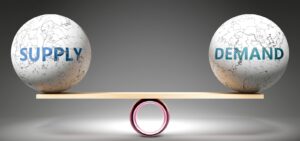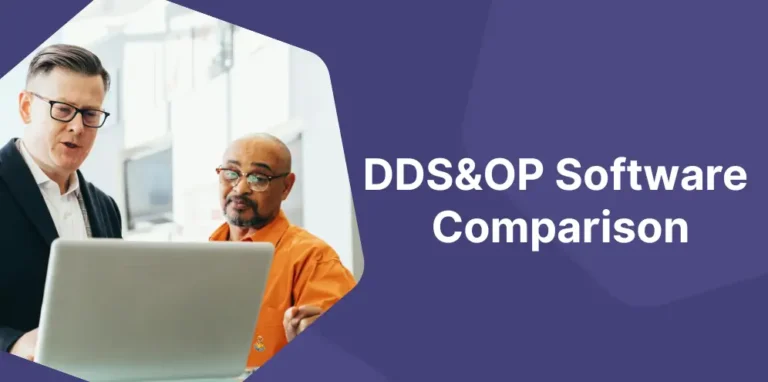Before deciding to invest company resources in a supply chain transformation project, we need to demonstrate a return on investment. This exercise often comes down to one question: If I reduce inventory by X%, how much money will I save?
On the other hand, if my transformation implies an increase in inventory, how can I calculate the costs involved?
In order to evaluate a return on investment, we must first understand our inventory carrying costs — in other words, all the expenses we incur while stocking and holding inventory over a period of time. At the same time, we must realize that there are imponderables and that the real cost of a stock is not a simple financial equation. In the equation, there are real variable costs, but also explicit or implicit fixed costs, risk assessments (of obsolescence, breakage, deterioration), investment alternatives, etc.
In this article, we’ll look at how to calculate inventory carrying costs — and how to use those numbers to evaluate the impact of new initiatives.
Express the Cost of Ownership as a Percentage
I have worked in international corporations where an inventory carrying cost percent was defined in the group’s financial standards. If you explore the literature on the subject, you will find a percentage in the 15% to 30% range. This means that if you carry a $1M inventory, it will cost $150-300k per year.
Having this type of percentage at hand helps to build an investment case: We evaluate the amount of inventory before/after, we apply the rate defined for the company (22% for example), and that’s it. If we reduce inventories by $1M we’ll save $220k per year.
Defining an inventory carrying cost convention at the enterprise level has multiple benefits:
- It acknowledges that this is a cost whose reality is difficult to apprehend on a case-by-case basis.
- It simplifies the debates — it’s official; Finance said so.
- It simplifies the calculations.
- It allows us to modulate decisions according to the company’s priorities. If the priority is to free up cash, let’s increase the inventory’s cost of ownership, and orient our choices in the desired direction.
It is clear, however, that there is a rough approximation. If my stock is short lived and has a highly variable demand, maybe I should value it differently than a stock of a product with no shelf life and a stable demand. If my inventory is very bulky, contains hazardous materials, or requires temperature control, it will probably cost more to store.
Analyze the Alternatives
The best way to assess the impact of a change is to evaluate the alternatives: What happens if I do Project A, or Project B, or if I do nothing?
In front of a specific project, you can therefore conduct a dedicated study, and try to identify:
- Your variable costs. For example, if your inventory is managed by a service provider, what is the variable cost per pallet? This is easy to assess.
- Your specific risks of obsolescence, expiration, or physical deterioration. This is more empirical. What is your historical annual rate of destruction or discount, depending on the nature of the assets involved?
- Your fixed costs increment. Depending on your inventory level, maybe you need one less warehouse, one less handler? What impact will the project have on fixed costs?
- Your capital lock-in cost. Ouch. This gets even more complex and intangible, because it depends on how easy it is for the company to access capital, as well as alternative opportunities to use this capital. You can invest one million in inventory, or invest it in a new production equipment, or in an R&D effort to innovate — what will be the comparative profitability of these alternatives?
- Your specific risks of disruptions / lost sales / damage to company reputation, customer retention and future revenue growth? Good luck defining an associated value…
Conducting a detailed analysis allows you to ask the right questions, and thus to guide the decision, but a part of the elements considered is imponderable. In the end, you will invest in the project if you can convince a team of decision makers that it is a good thing for the company.
Recognize That Stock is an Investment
The equation is simple: Good inventory is inventory that sells. A certain investment in inventory is required to ensure the flow of business and meet the expectations of the market.
If you invest more, you will tie up resources and lose agility because you’ll have to clear inventory before you invest in new products. This puts you at risk of obsolescence.
If you invest less, you will weaken your flows and risk shortages, lost sales, and damage to your reputation.
Focus on Stock Health Rather than Cost
To minimize the cost of ownership of inventories, it is therefore necessary to ensure that the right stock is always available, in line with demand / allowing a secure and rapid flow.
This implies managing inventories, not just being subjected to them, and deciding on purchases and production to meet real demand. More important than a hypothetical cost estimate, it is the health of inventories that must be measured and improved. Improving bimodal distribution, reducing lead times and work-in-progress, increasing frequencies within the framework of capacities, this is what will ensure profitability…












